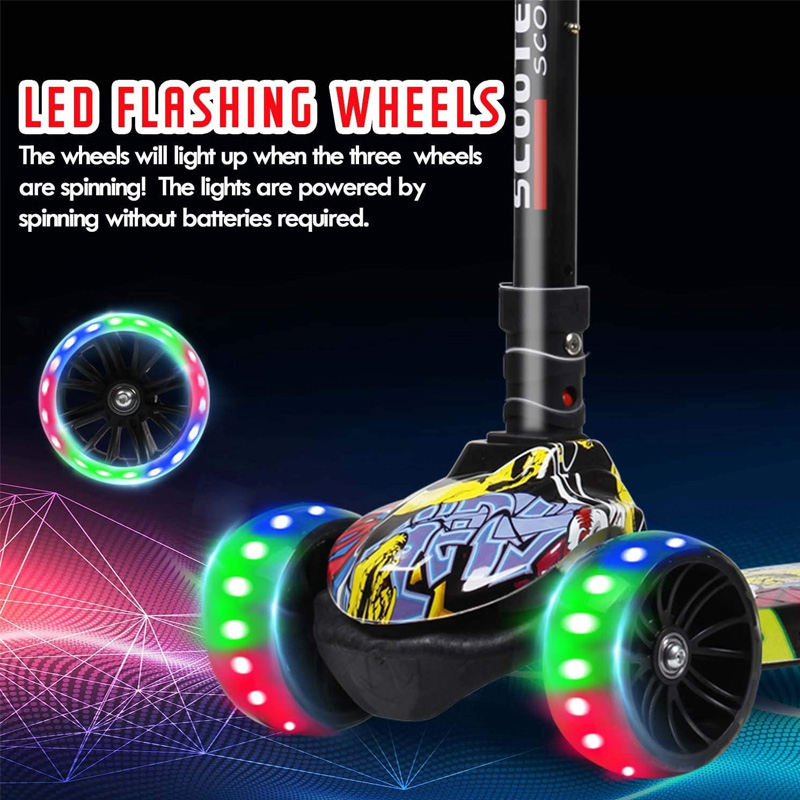The Impact of Kids' Scooters on Skateparks
Skateparks have long been cherished spaces for skateboarders, BMX riders, and rollerbladers to showcase their skills, express their creativity, and foster a sense of community. However, the increasing presence of kids on scooters has stirred a debate about the dynamics of these parks. While scooters can provide a fun and accessible way for younger riders to engage with extreme sports, their impact on skateparks can sometimes be less than benign.
The Impact of Kids' Scooters on Skateparks
However, the introduction of scooters into areas designed primarily for skateboarding and BMX riding can lead to significant friction. Skateparks are often designed with specific dimensions, angles, and transitions that cater to wheels and boards of particular sizes and shapes. Scooters, with their wider decks and smaller wheels, can sometimes disrupt the flow of the park. This can become problematic, especially during peak hours when skaters and riders are trying to practice their tricks and stunts.
lehuo scooter kids ruin skatepark

In a situation where scooters are frequently intermingled with skateboarders, accidents can happen. The different riding styles and speeds can create a hazardous environment. Sharp turns, jumps, and tricks from older skateboarders and BMX riders may not account for the slower or less predictable movements of scooters, leading to collisions that could cause injury. Thus, the shared use of skateparks by different wheeled sports creates a need for greater awareness and etiquette among all users.
Moreover, there is a cultural divide between the different groups utilizing the skatepark. While most BMX riders and skateboarders often invest significant time in perfecting their craft, some view the scooter users as not sharing the same dedication to extreme sports. This can create a hierarchy within the park, sometimes leading to tensions where experienced riders feel frustrated with beginners on scooters who may lack skills and awareness. This dynamic can lead to the ostracizing of younger scooter users and reduce the collaborative spirit that skateparks originally fostered.
Interestingly, some skateparks have begun to adapt to the rising trend of scooters by allocating specific areas or designing features that cater to all types of wheeled sports. By creating designated spaces within parks, such as small ramps or sections purely for scooters, facilities can minimize conflicts while still promoting inclusivity. This way, young riders can gain confidence on their scooters, while skateboarders and BMX enthusiasts can maintain their space to practice more advanced routines.
In conclusion, the presence of kids on scooters at skateparks presents both opportunities and challenges. While scooters can introduce youth to the exhilarating world of wheeled sports, their increasing dominance could threaten the harmonious nature of these beloved spaces. Finding a way to coexist and nurture all users—whether they ride a skateboard, BMX bike, or scooter—will be crucial in preserving the essence of skateparks as inclusive environments for all ages and skill levels. With thoughtful design and a spirit of cooperation, skateparks can continue to be places where everyone can thrive and enjoy their passion for riding.
-

 Scoot&RideKids Child Kick Push Scooter 3 Wheels with LED Flashing Tilt Lean Boys Girls Scooter
Scoot&RideKids Child Kick Push Scooter 3 Wheels with LED Flashing Tilt Lean Boys Girls Scooter




- 4
$33.17 -

 Scoot&RideKids Scooter Child Kick Flashing LED Light Up 3 Wheel Push Adjustable Folding 3
Scoot&RideKids Scooter Child Kick Flashing LED Light Up 3 Wheel Push Adjustable Folding 3- 0
$25.52 -

 Scoot&RideKids Scooter Child Kick Flashing LED Light Up 3 Wheel Push Adjustable Folding 2
Scoot&RideKids Scooter Child Kick Flashing LED Light Up 3 Wheel Push Adjustable Folding 2- 0
$33.17 -

 Scoot&RideKids Scooter Teens Foldable Kick Push Scooter Adjustable Height Safe 2 Wheels
Scoot&RideKids Scooter Teens Foldable Kick Push Scooter Adjustable Height Safe 2 Wheels




- 4
$49.99
Meet our partners and discover what powers their creativity!
When you register for a Lohas scooter, you will receive a 10% discount on your first order and can be notified of sales, new product launches and other offers in advance.









